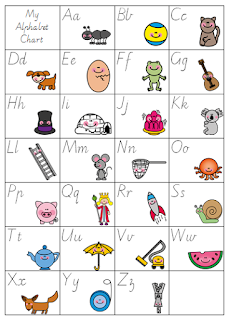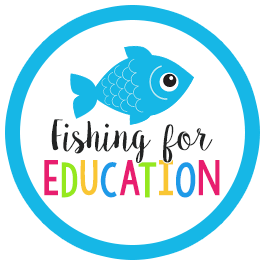Hi everyone!
This is my first post on the Australian Teachers Collaborative Blog. I'm Jem from Jem's Bright Buttons, and I'm really excited to be joining this fantastic team of teachers and bloggers!
Transition background
For the past four years I've taught prep (in Victoria that is the first year of school, which is known as Kindergarten, Foundation, Reception, etc depending on where you work) and I've been part of the transition team. Every year we work hard to make sure the transition from kinder to school is smooth and exciting for the new kids. We hold transition sessions, parenting sessions, information sessions and 'meet the teacher' sessions. But today I want to share our Transition Showbags!
Transition Showbags
Many years ago one of our wonderful prep teachers started to send home showbags, and it has grown since then. Our showbags are filled with fun things, informative things and useful things. I'll show you what we put in our bags this year, and explain how we get it all done!
What it looks like
We have used lots of different bags: brown paper bags, white paper bags, opaque coloured plastic bags. Different things will work for different schools, and different budgets. This year we used simple brown paper bags with handles, which we bought from a local '$2 shop'/discount shop.
What's inside it
The items inside have been developed over a number of years. Some are purchased, some are donated and some are made by the school. These change year to year depending on who is on the Transition Team, and what great ideas we've had throughout the year.
Below are some donated and some purchased items. We have two local banks, and we ask each of them if they have things that could be put into the bag. This year we got stickers, colouring sheets, balloons, bookmarks and mini coloured pencils. We also purchased and included a half-sheet of stickers and a 'fancy pencil'. Most of the items we purchase are through Officemax (a school stationery supply company) but we also buy things at '$2 shops'/discount shops.
These are useful items that students will (hopefully) use over the summer break to prepare themselves for school. We found this year that many students had poor scissor skills, so we included scissors in the bags. We gave them a dice with some suggested uses, a writing pencil to practice their pencil grip, and a whiteboard marker to write on a laminated ABC sheet.
To support their alphabet knowledge before they start school we gave them a laminated alphabet handwriting chart in our state font (Victorian Modern Cursive) and an alphabet chart with pictures (also in Vic Modern Cursive).
To help parents with preparing their children for school we gave them a Maths Tips and Ideas sheet, and Reading and Writing Tips and Ideas sheet, the Headstart sheet to outline things we'd like new preps to be able to do, and gave them an easy playdough recipe to support fine motor skills and hand strength development.
The favourite bits of the bag every year are the Morning and Night Time Routine cards and the Countdown To School card. New students love completing the different activities on the Countdown card and get excited to start school! The routine card supports parents to set up effective and sensible morning and evening routines to help students succeed at school.
Finally, we included a colouring sheet (our school uses rockets in our logo) and a Snakes and Ladders game - great for taking turns, counting, reading a dice, and learning that we won't always win games.
The last thing we add to the bags, which I don't have a photo of, is a student name card. It is typed in our state font and laminated so that new students can use their whiteboard marker to practise writing their name over the summer holidays.
How we make it happen
At my school we are lucky to have very supportive parents who volunteer to help with all sorts of things around the school. In this case, we got four parents to come in for a couple of hours over two days. As transition coordinator I organised all of the 'raw' materials (photocopied, collected, purchased) into a big box. The parent helpers laminated and cut all of the sheets, then they filled the bags following a list I provided them. The last thing they do is tie the name card on with curling ribbon.
At our second Transition Session (we have five sessions) we hand out the Showbags to each student. This gives them a chance to have a look with parents, and ask any questions about the items in the bags.
If you'd like to do something similar we have a few freebies for you!
Paula (Paula's Place) has a fabulous School Countdown sheet available for parents to use. It's a list of suggested ideas to try in the lead-up to school, not requirements that must be completed. It's available free to our readers
here. But it's only available until mid-January!
Chantelle (Miss Jacob's Little Learners) has an
awesome alphabet chart in Victorian Modern Cursive, available for free on her TPT store.
I (Jem's Bright Buttons) have a
free Victorian Modern Cursive handwriting chart available on my TPT Store, and
the alphabet chart in one of my photos is available as a freebie on my store as well.
I hope you can take away some fun ideas for Transition into school, or even ideas for Transition between grades!
Thanks,
































































